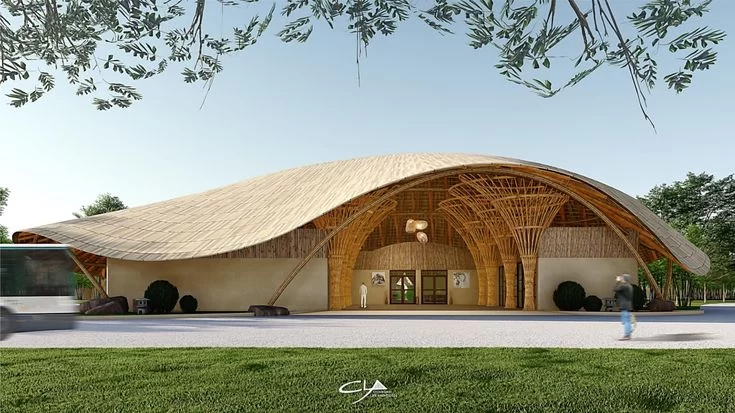The Benefits of Using Eco-Friendly Materials in Your Architectural Designs
- Introduction to Eco-Friendly Materials in Architecture
- The Environmental Impact of Eco-Friendly Materials
- Economic Benefits of Using Eco-Friendly Materials
- Health Benefits of Eco-Friendly Design
- Real-World Examples of Eco-Friendly Architecture
- How to Incorporate Eco-Friendly Materials into Your Designs
1. Introduction to Eco-Friendly Materials in Architecture
As the world becomes more aware of environmental challenges, the demand for sustainable, eco-friendly materials in architecture has skyrocketed. Eco-friendly materials are those that minimize environmental impact, often by being renewable, reusable, or made with low-impact manufacturing processes. Integrating these materials into architectural designs helps create more sustainable buildings, contributing to a cleaner, healthier planet. In addition to environmental benefits, these materials can also improve building performance and contribute to long-term savings.
2. The Environmental Impact of Eco-Friendly Materials
One of the main benefits of using eco-friendly materials in your architectural designs is the positive impact on the environment. Traditional construction materials such as concrete, steel, and brick have a large carbon footprint, contributing to pollution and resource depletion. On the other hand, eco-friendly materials help reduce waste, energy consumption, and emissions.
1. Reduced Carbon Footprint: Eco-friendly materials such as bamboo, recycled steel, and sustainable timber have a much smaller carbon footprint compared to traditional materials. By using materials that require less energy to produce and transport, architects can significantly reduce the environmental impact of their projects.
2. Waste Reduction: Many eco-friendly materials are made from recycled or repurposed materials. This helps reduce construction waste and prevents materials from ending up in landfills. For example, reclaimed wood, recycled glass, and rubber flooring made from recycled tires are all great alternatives to new, resource-intensive materials.
3. Sustainable Sourcing: Eco-friendly materials are often sourced from renewable resources. Bamboo, for example, grows rapidly and can be harvested sustainably, making it an ideal alternative to hardwood. Using renewable materials helps preserve ecosystems and reduces the strain on natural resources.
3. Economic Benefits of Using Eco-Friendly Materials
While eco-friendly materials might have a higher upfront cost, they can lead to significant savings over time. Here’s how:
1. Long-Term Savings on Energy Costs: Many eco-friendly materials, like insulating materials and energy-efficient windows, can improve a building's energy efficiency. This leads to reduced heating and cooling costs, which is a major long-term saving for homeowners and businesses alike.
2. Durability and Longevity: Eco-friendly materials are often more durable than traditional ones. For example, recycled steel and sustainably sourced wood can be more resilient to weathering and wear over time. This reduces the need for frequent repairs or replacements, saving money on maintenance.
3. Increased Property Value: Buildings constructed with sustainable materials can attract higher rents or sale prices. Eco-friendly buildings are often seen as more desirable by tenants and buyers who are looking for environmentally conscious, energy-efficient homes or office spaces.
4. Health Benefits of Eco-Friendly Design
Incorporating eco-friendly materials into architectural designs doesn’t just benefit the environment and wallet—it can also have positive effects on human health. Here’s how:
1. Improved Indoor Air Quality: Traditional construction materials often contain harmful chemicals that can off-gas into the indoor environment. Eco-friendly materials such as low-VOC (volatile organic compounds) paints, natural fibers, and non-toxic finishes contribute to better indoor air quality and reduce health risks like respiratory issues.
2. Enhanced Comfort: Materials that improve insulation can lead to more comfortable living and working spaces by regulating temperature and reducing noise. This can have a direct impact on the well-being of the building’s occupants, improving both comfort and productivity.
3. Connection to Nature: Many eco-friendly designs incorporate natural elements such as green roofs, living walls, and wooden finishes. These materials not only reduce environmental impact but also help create biophilic spaces that foster a sense of connection to nature, which can improve mental health and reduce stress.
5. Real-World Examples of Eco-Friendly Architecture
Many architects and designers are leading the way with eco-friendly materials. Here are some real-world examples that demonstrate the potential of sustainable building practices:
The Edge, Amsterdam: One of the world’s greenest office buildings, The Edge incorporates eco-friendly materials such as recycled concrete, timber, and solar panels. The building’s energy efficiency, combined with smart building technology, has earned it LEED certification.
The Bullitt Center, Seattle: Known as the “greenest commercial building,” the Bullitt Center uses sustainable materials such as locally sourced wood and recycled steel. It also includes features like a green roof, solar panels, and rainwater harvesting systems, making it an exemplary model of eco-friendly architecture.
The Bosco Verticale, Milan: This vertical forest uses plants to cover the building’s facade, improving air quality and providing insulation. The structure is built with eco-friendly materials and serves as a prime example of how green architecture can merge with urban spaces.
6. How to Incorporate Eco-Friendly Materials into Your Designs
Incorporating eco-friendly materials into your architectural designs doesn’t require a complete overhaul. Here are a few tips to get started:
1. Start with the Basics: Begin by using materials that are locally sourced or made from renewable resources. Bamboo, cork, and recycled wood are great starting points.
2. Focus on Energy Efficiency: Invest in materials that improve a building’s insulation and energy efficiency. Insulating windows, green roofs, and efficient HVAC systems can drastically reduce energy consumption and make a significant impact on the environment.
3. Embrace Modular Design: Modular construction uses prefabricated components that can be easily recycled or repurposed. This approach not only reduces waste but also speeds up construction timelines.
By starting small and gradually incorporating more eco-friendly materials, you can create sustainable, environmentally-conscious designs that benefit both the planet and your clients.









